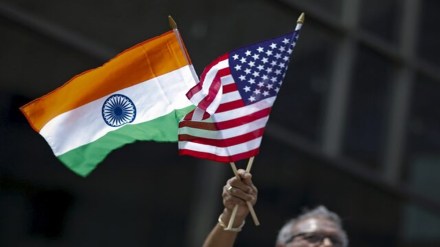As the August 1 deadline drew closer, the negotiations between India and the US for an interim trade deal appeared deadlocked, with Washington insisting on zero-duty access to nearly the whole of the Indian market. But both sides were still inclined to be continuously engaged, and were far from moving apart.
US trade secretary Howard Lutnick reiterated on Tuesday that president Donald Trump wants completely open markets and that “he wants to do it (deals) now.” We have put the deals on the table and now it is up to president Trump whether he wants to accept (them) or not,” he told CNBC.
He also stated that while negotiations on a few remaining issues with the European Union (EU) were on, and that talks with China were “their own things”. For the rest of the world, he said, “we’re going to have things done by Friday.”
No rush in Delhi
As the uncertainty over an interim deal persisted, a US team is scheduled to visit New Delhi on August 25 for the six rounds of talks for the proposed bilateral trade agreement (BTA). The first tranche of the BTA is to be consummated by the fall of this year, which is just a couple of months away.
For India, absence of an interim deal could mean a higher tariff for entry of its goods into the US market at least till the autumn sets in, compared to the extra baseline rate of 10%, besides the most favoured nation (MFN) rates. It is unclear yet whether the tariff for India could straightway rise to the 26% announced by Trump as he unveiled disparate “reciprocal tariffs” for most countries in early April. India is understood to have pushed for a rate of 15% or thereabouts during the talks, similar to the rates offered to the European Union and Japan. If the tariff turns out to be significantly higher than this, it would give little comparative advantage to India vis a vis its key Asian competitors.
Trump recently said he was looking at tariffs “somewhere in the 15–20% range” for the countries with which no deal has been signed after he paused the reciprocal tariffs.
On its part, India may also have to commit to scale up its energy and defence purchases from the US, for an amicable settlement with the US, without denting the prospects of domestic value addition in assorted areas. Large purchase commitments were part of Washington’s deal with the EU, Japan and the UK.
Sensitive sectors, tech access remain sticking points
US Trade Representative Jamieson Greer said Monday that more talks were required for any kind of a deal with India. This dampened expectations about an interim trade pact.
Officials here are not anxious about the interim deal or the short-term tariff increase its absence could lead to. However, they remained confident of a deal with the world’s largest economy over the next few weeks. India has been firmly guarding its “sensitive sectors” which includes agriculture, dairy and a few labour-intensive industries. It is also pitching hard for greater market access to the US for sectors where job creation potential is high. India is also concerned about the sectoral tariff the US has imposed or threatening to put, especially in areas of its export interest like pharmaceuticals. India is also seeking relief from the 50% sector-specific tariffs in steel and aluminium and 25% on the auto sector. Lutnick said on Tuesday that Trump is going to come out in the next two weeks with his pharmaceutical policy. He also emphasised that August 1 is a “hard deadline” for countries to begin paying tariffs
“We continue to speak with our Indian counterparts. We always had very constructive discussions with them. They have shown strong interest in opening up portions of their market. We of course are willing to continue talking to them. But I think we need some more negotiations on that end with our Indian friends to see how ambitious they want to be,” Greer said in an interview to CNBC.
He said President Trump is more interested in having good deals rather than quick deals that substantially open other markets, “that is, they open everything or nearly everything.”
The fifth round of negotiations between India and the US happened in Washington from July 14 to July 18. Between the two physical rounds both sides still remain engaged in discussions.
Along with duty cuts in the farm sector, the US also wants India to allow entry of genetically modified agricultural products in India which officials in New Delhi say would not be conceded. The US also wants India to lower duties on automobiles.
Apart from goods trade, the other objective of the US in these negotiations is to get a more liberal regulatory climate for its technology companies in India.
The strategic partnership between the two countries is also guiding the approach in the talks. The trade deal may be sweetened with India purchasing more defence equipment from the US.
The deal between India and the US goes beyond trade and both sides are keen to preserve the relationship. The US remains the biggest market for India’s exports and the only major economy with which it enjoys a trade surplus.
